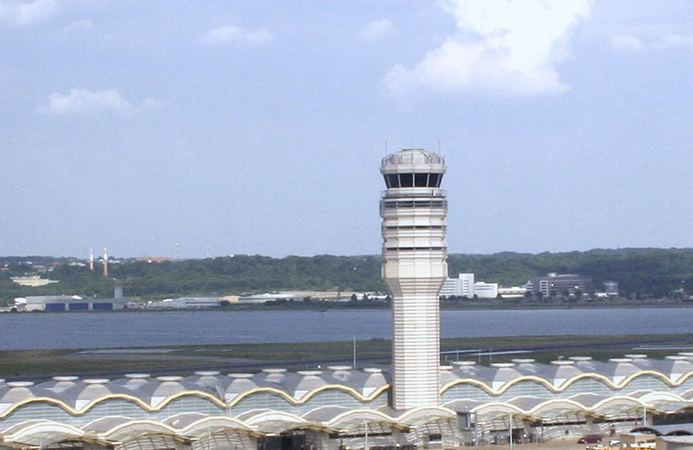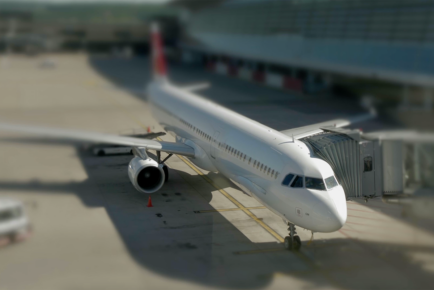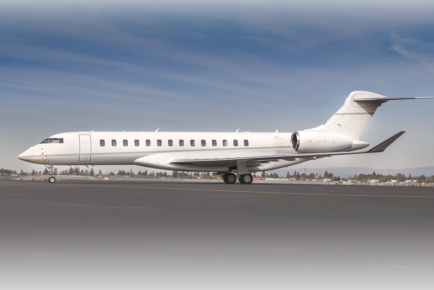
Anticipate and Prepare for the Way Ahead.
World Aircraft Sales, Feb 2014
by Ken Elliott
Download a PDF of the article.
The following update covers the current status of Data Communications at a time when industry and the FAA begin to finalize a new Air Traffic Network standard and Europe implements more of its Link 2000+.
In the NextGen/SESAR and ICAO automation environment, data transfer and surveillance are both key enablers. There is a lot of history and regional variance in their migration, so today we operate in a realm of confusion. Cutting to the chase we have two major areas to consider; Communication and Surveillance.
Communication: This comes under ATNB1, and while the future means of transmission is VDL-2 the current means can be via existing ACARS (POA), HFDL and in some cases Satcom (Inmarsat or Iridium). Communication is also part of FANS that includes surveillance. Communication is typically via text messaging like on your mobile phone, but is more complex. ATN-B1 is largely used over land and line of sight. (Note: A glossary of related acronyms used in this feature has been included at the end of this article, overleaf.)
Surveillance: This comes under FAN 1/A (1/A+) and includes position reporting amongst a host of other associated data. ATNB2 is the new upcoming format that will include both communication and surveillance, but more importantly will be in its final version a truly global (ICAO) standard.
Capability is related to ground and air equipage so all of the above contains significant variation in implementation and operational capability even today. New aircraft are being built that will be fully FANS 1/A compliant while ready for ATN-B2, and many legacy aircraft from airliners to business jets achieve ATN-B1 using ‘plain old ACARS’.
For Europe there is Link 2000+, a stop-gap requirement centered on ATN-B1, and plans exist to introduce a version of ATN-B2 ahead of the final version. In the contiguous US there are no plans to require FANS 1/A, but instead introduce guidance being prepared for an advanced version of ATN-B2 that will begin operation sometime after Europe’s stop-gap version.
GOING DEEPER
Means and protocols of data communication again vary widely by region and aircraft type. Some methods and protocols are CPDLC, PMCPDLC, HFDL, ACARS, FMC WPR and ADSB ITP. While an aircraft may be fully equipped, the ground side that, in itself is complex may not be and vice-versa. The ground side includes dispatchers, air navigation service providers (ANSP), communication service providers (CSP), satellite service providers (SSP) and air traffic control itself (air traffic service units ATSU).
Historically, with respect to data communication, messages were received via voice over VHF, HF and some Satcom. Messages in text were also transmitted automatically or manually over VDL Mode 0/A, HFDL for example over the poles, Satcom Inmarsat or Iridium, and via AFIS VHF or Satcom. As the need for data information requirements and the density of aircraft within regions increased, more advanced communication methods and protocols became necessary.
Both information and density needs are predicted to increase further. While the FAA has prevaricated over what to do, Europe has introduced Link 2000+ and planning on its early version of ATN-B2. In a nutshell you could look at the implementation situation as four distinct phases (see Diagram 2, top right).
ADS-C: This is a means by which the terms of an ADS-C agreement will be exchanged between the ground system (ATSU) and the aircraft, via a data link, specifying under what conditions ADS-C reports would be initiated, and what data would be contained in the reports. The contract (C) includes aircraft ID, address, air vectors, ground vectors, projected profiles, Met-data, min/max ETA, extended projected profile all via automatic download and then a pilot-controlled message capability for use with, for example, Mayday situations and other emergencies.
ADS-C generates automatic downlink reports as a contract between aircraft and ground while ADS-B is an open broadcast that is available to all who are equipped to ‘see’ (and for those with ADS-B In, display). Based on density and needs, ATC can change the rate at which data is automatically downloaded from an aircraft without the crew knowing.
ADS-B ITP: Planned as an alternative to ADS-C using fully ADS-B equipped aircraft and advanced trajectory-based operations (TBOs) to route and guide aircraft via in trail procedures (ITPs), an example of ADS-B ITP is under interval management where uplink clearance is provided to follow, merge or cross another aircraft.
FAA Ocean 21: By 2015 the FAA intends to introduce Ocean 21, an ADS-C CDP and ADS–B ITP automation system that lets controllers know what each aircraft is capable of doing; its precise location; its intended flight path; and potential future conflicts. Suitably equipped and approved operators will be able to cut through oceanic flight lanes to the fastest routes where less fuel is used. Aircraft separation will be reduced as new routes are sent to crews to then loaded into their navigation systems, optimizing oceanic performance and routing.
Aircraft Equipage: From business jet to wide-body airliner, the equipage challenge is enormous. New aircraft orders are increasingly compliant, expecting only minor bulletin changes for anticipated data communication implementation. Older legacy aircraft may expect significant changes, although the FAA is making it very clear it intends to continue to support ATS ACARS, VDL Mode 0 for towers, and importantly FANS 1/A+ equipped aircraft that include the message latency timer or monitor.
The FAA is going to great lengths to not require minimum equipage and to work diligently on ATN-B2 in an advanced form with its implementation date of 2025, if not sooner. Sequestrations, budget restrictions and economic caution in general are also driving the FAA’s direction and reluctance to embrace early versions of ATN-B2 or the current FANS 1/A.
Note: Equipage includes aircraft Required Navigation Performance (RNP) capability, being sufficiently accurate for the tighter tracks being flown as a benefit of FANS equipage. Here are some of the types of equipment impacted by the recommended current and future implementations, not by the aircraft or equipment manufacturer.
• The FMS needs to be capable of handling the messages, and its corresponding GPS capable of providing ADS position information.
• Many aircraft have avionics card cages with integrated cards for various systems and these often need upgrading.
• VHF radio, data concentrators and communication management units need to be upgraded or added.
• The Cockpit Voice Recorder needs to be upgraded to allow data recording of all digital and voice communication.
• Audio panels need modification or an external dialer installed for satellite communication and operators may need to add an Inmarsat or Iridium satcom. In the case of Inmarsat-based satcoms there is the capability for safety voice service where ATC can override existing satcom phone communication as a priority pre-empt, with safety related messages.
EQUIPAGE COSTS
Implementation costs will vary widely because of the aircraft age and where you need to operate. Link 2000+ costs for EU Ops are different to those needed for FANS even on some new aircraft. With ATN-B2 not yet fully defined and specified, expect further costs to follow.
Some corporate jets are being quoted between $200-300K, while others are between $600-800K for data communication upgrades. Creative low-cost solutions developed outside of the major aircraft and equipment suppliers may enable lower implementation costs – especially where existing equipment can be added to instead of upgraded. One could envisage a bolt-on type solution that leaves the existing avionics untouched. This approach however, has its drawbacks in STC costs and aircraft resale concerns.
IN SUMMARY
Working with your preferred MRO carefully, you should decide on the best approach to your data communication needs while looking at the latest operational implementation dates. Consider where you will need to operate whilst establishing if your aircraft may be grandfathered or exempted from regional requirements. The FAA is being very careful to consider legacy operators including business jets, while Europe continues to implement in stages.
Most importantly, understand that you not only have to consider equipage but also obtain the operational approval to use it! The following FAA link should be most helpful and for NBAA members there is also very useful aircraft operations information covering data communication on its member site. Finally, as always, Duncan Aviation provides solid and reliable data on its public site.
Visit www.faa.gov/about/office_org/ headquarters_offices/ato/service_units/enroute/ oceanic/ and select Data Link for all the new and existing documents for data communication operation and other approvals.
DATA COMM ABBREVIATIONS GLOSSARY
ACARS: Aircraft Communication Address & Reporting System
ADS-B: Automatic Dependent Surveillance – Broadcast
ADS-B ITP: Automatic Dependent Surveillance Broadcast (with In-Trail Procedures)
ADS-C: Automatic Dependent Surveillance – Contract
ADS-C CDP: Dependent Surveillance Contract (with Climb/Descent Procedures)
AFIS: Aircraft Flight Information Service
ATN-B1: Air Traffic Network-Baseline 1
ATN-B2: Air Traffic Network-Baseline 2
ATSU: Air Traffic Service Unit
FANS: Future Air Navigation System
HFDL: High Frequency Data Link
PM-CPDLC: Protected Mode – Controller-Pilot Data Link Communication
VDL: VHF Data Link (Mode 0 or Mode 2)
❯ Ken Elliott is an avionics veteran of 40 years and more recently focused on NextGen. His work within the NextGen Advisory Council subcommittees brings him close to current and intended development effort. Equally, his specialization in low-vision operations provides a deeper insight into one of the pillars of NextGen. Ken has served the aviation industry on three continents from light GA to large corporate aircraft. His current employer, Jetcraft, is a leading aircraft brokerage company with worldwide presence.
❯ More from www.www.jetcraft.com, email: [email protected]
SIGN UP FOR OUR MONTHLY JETSTREAM RECAP
Don't miss future Jetstream articles. Sign up for our Jetcraft News mailing list to receive a monthly eblast with links to our latest articles. Click to join the 1,800+ subscribers on our mailing list.





